Health
Stop Sugar Cravings in as Little as Two Minutes With These Simple Tricks

Sign Up
Create a free account to access exclusive content, play games, solve puzzles, test your pop-culture knowledge and receive special offers.
Already have an account? Login
Use left and right arrow keys to navigate between menu items.
Use escape to exit the menu.

Health
Has Kris Jenner found the fountain of youth? Experts weigh in on her stunning transformation
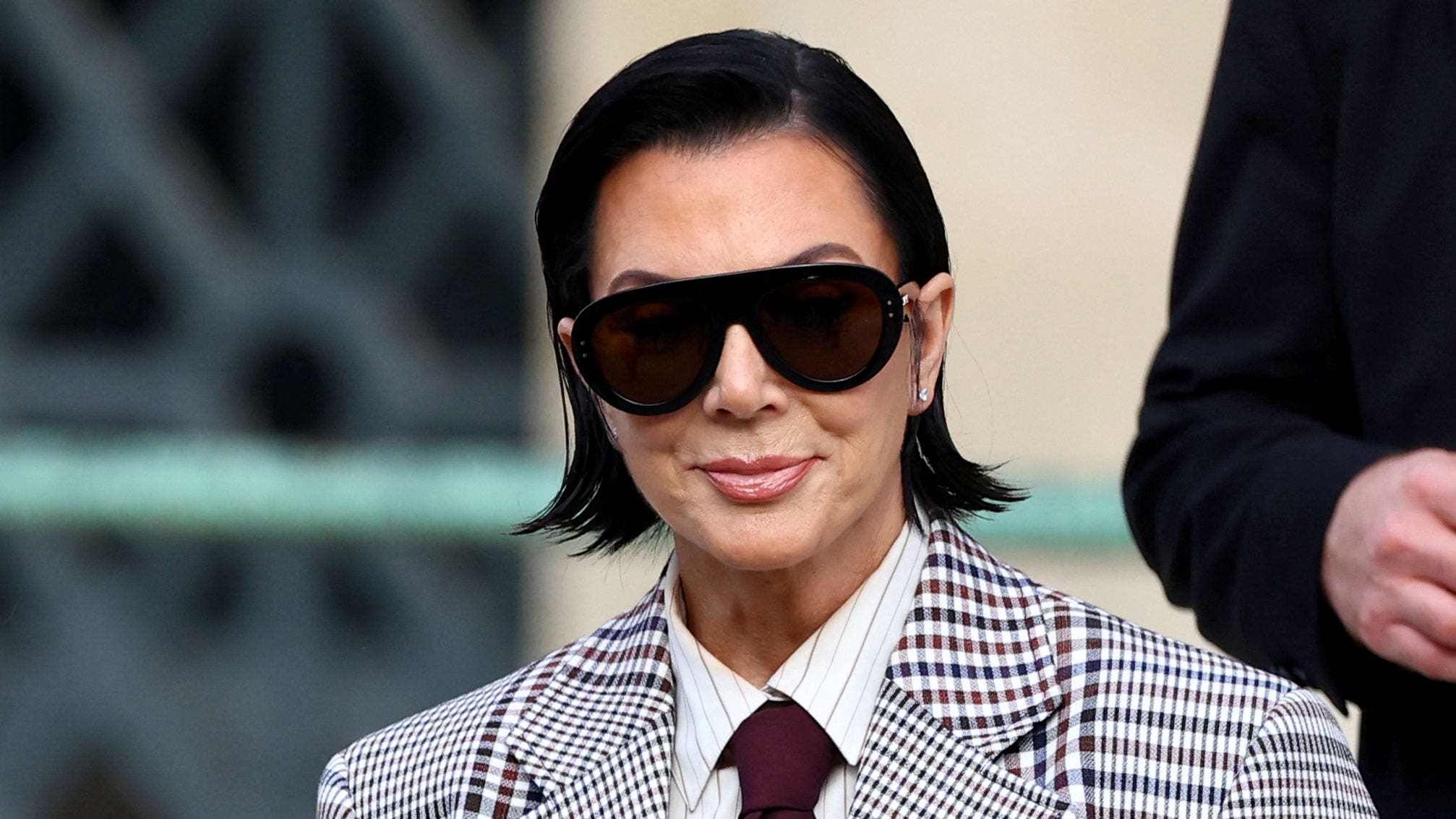
NEWYou can now listen to Fox News articles!
Kris Jenner — known as the “momager” of the Kardashian-Jenner empire — has made headlines in recent weeks for her more youthful appearance, sparking rumors of a possible deep plane facelift.
A representative for Jenner confirmed to another outlet that Dr. Steven Levine of New York City performed Jenner’s recent work, but did not specify the type of procedure. (Fox News Digital reached out to Levine and Jenner for comment.)
Dr. Patrick Davis, a Beverly Hills facial plastic surgeon, said that Jenner appears “youthful and natural,” which is the hallmark of a “well-performed procedure.”
PLASTIC SURGERY TRENDS TAKE A SURPRISING TURN AS DOCTORS SEE MORE PATIENTS ‘SIZING DOWN’
“It is difficult to comment specifically on what technique was performed, though in some fashion, the structural elements of her face were lifted to reset her skin tissues,” Davis, who has not treated Jenner, hypothesized in an interview with Fox News Digital.
“She has a healthy-looking distribution of fat contributing to this new look, which could potentially be the effect of a fat transfer in addition to a facelift.”
Kris Jenner is pictured in Paris, France, on May 13, 2025. Jenner has made headlines in recent weeks for her more youthful appearance, sparking rumors of a possible deep plane facelift. (Reuters)
Dr. Jonathan Kaplan, a board-certified plastic surgeon with Pacific Heights Plastic Surgery in San Francisco, agreed that Jenner has gotten an “incredible result” from what “appears to be” a deep plane facelift.
Traditional vs. deep plane facelift
With a standard or traditional facelift — also known as a SMAS facelift, or a Superficial Musculoaponeurotic System facelift — the surgeon makes incisions behind the hairline and around the front of the ear, lifting and tightening the deeper tissues and muscles and then removing excess skin.
This can eliminate wrinkles, sagging skin and the “jowl-like” effect, achieving a more youthful contour of the face and neck, according to the American Board of Cosmetic Surgery.
‘SIX-PACK SURGERY’ GAINING POPULARITY AMONG MEN, SAY PLASTIC SURGEONS
Davis said most of his education and training has focused on deep plane facelifts.
“A deep plane facelift involves a wider dissection under the structural elements of the face, which then allows the surgeon to reset a greater proportion of facial tissues,” Davis said.
“The benefit of this technique is that a more natural, vertical reset can be achieved — and more importantly, the tissues re-attach themselves in a broader way, allowing for a more durable result.”
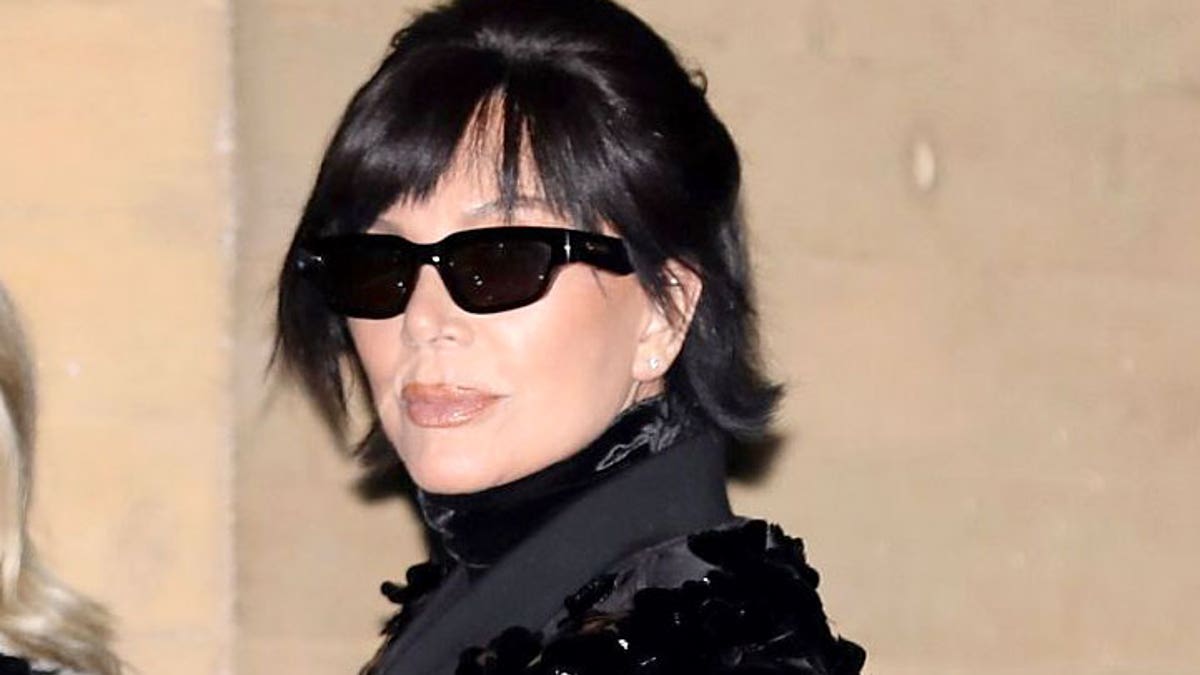
Kris Jenner is seen at Nobu on June 7, 2025, in Malibu, California. Dr. Jonathan Kaplan, a board-certified plastic surgeon with Pacific Heights Plastic Surgery in San Francisco, agreed that Jenner has gotten an “incredible result” from what “appears to be” a deep plane facelift. (Getty Images)
It’s important to choose a facelift that is right for the patient and that falls within the surgeon’s expertise, Davis noted.
“In those patients who have had multiple facelifts in the past, it could be wise to perform a simpler SMAS facelift with less dissection, as the tissues have been manipulated in the past,” he advised.
Risks and recovery
Any elective or non-elective surgery carries some degree of risk, experts agree.
“In any given surgery, there is a risk of infection, nerve damage, or bruising and swelling,” Davis cautioned. “These are minimized based on the surgeon’s experience and the frequency with which they perform the procedure.”
THIS DAILY BEAUTY ROUTINE COULD BE RUINING YOUR HAIR, EXPERTS WARN
It is important that the surgeon goes over these risks with the patient in person, according to Davis.
Because the deep plane technique involves a more extensive dissection of tissues under and around facial nerves, Kaplan cautioned that the biggest risk is facial paralysis, which can be temporary or permanent.
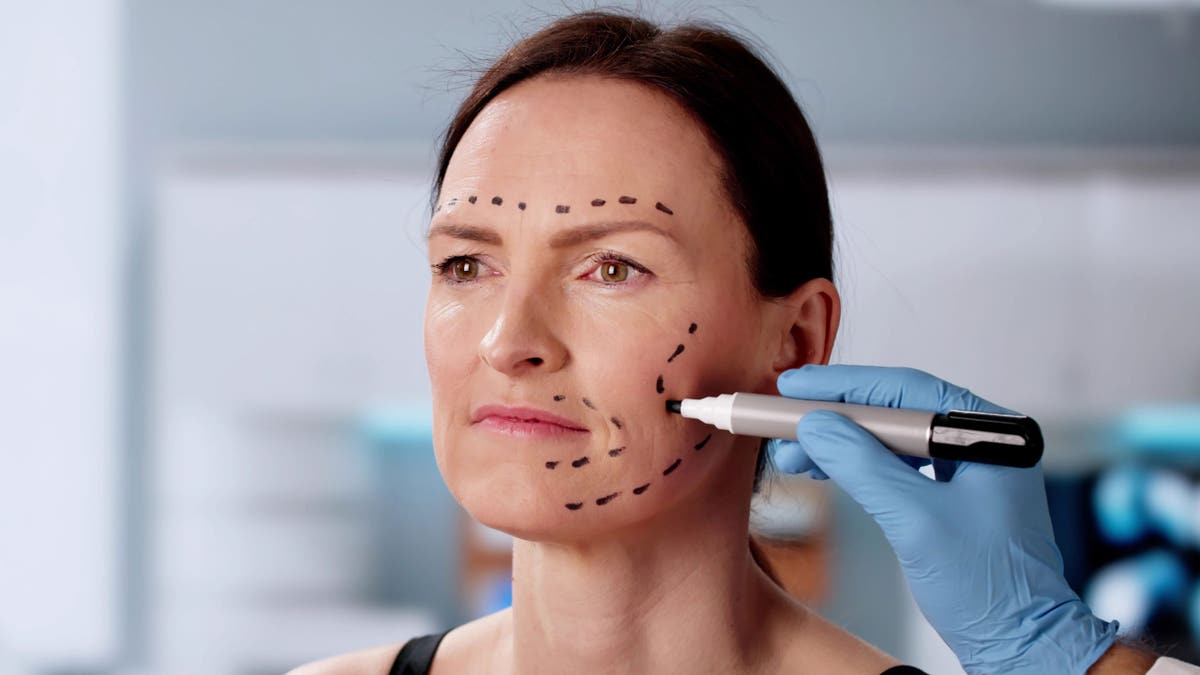
“A deep plane facelift involves a wider dissection under the structural elements of the face, which then allows the surgeon to reset a greater proportion of facial tissues,” a surgeon said. (iStock)
“It’s a newer variation that requires a greater understanding of the anatomy to be successful,” he said.
Davis tells his patients that a deep plane facelift has a typical recovery time of about six months for full results, though many can return to work and other functions within three to four weeks.
HAIRSTYLISTS AND MEDICAL EXPERT CONFIRM TEMPORARY HAIR LOSS AFFECTING OZEMPIC USERS
“These procedures are not debilitating — however, there is some cosmetic downtime, which varies from patient to patient,” he noted.
In Kaplan’s practice, he encourages most patients to be out and about two weeks after surgery.
“They may still have some bruising, but it’s typically in the lower neck or upper chest at that point and can be covered,” he said.
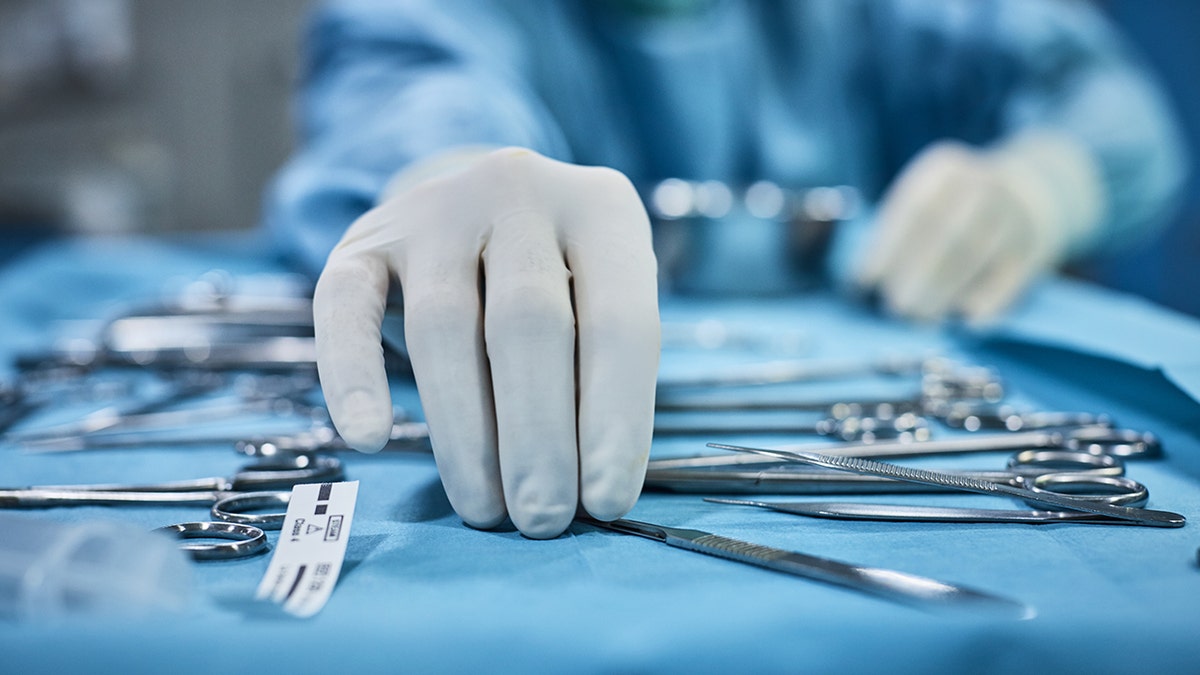
When opting for a facelift, it’s important to choose a board-certified facial plastic surgeon who is specifically trained in facelifts of deep SMAS tissue, doctors agreed. (iStock)
Various factors can affect a patient’s recovery timeline, the experts say. Some, like genetics, can’t be controlled.
“Other things, however — like a low-salt diet, exercise, lymphatic massage, hyperbaric oxygen treatments and keeping up with proper post-op care — are within our control,” Davis said.
Most surgeons will have the patient wear a head and neck compression garment for two weeks, Kaplan noted.
“In general, the patient should not be in a great deal of pain — if they are, that can actually be a sign of a hematoma (bleeding under the skin),” he said.
What to discuss before surgery
When opting for a facelift, it’s important to choose a board-certified facial plastic surgeon who is specifically trained in facelifts of deep SMAS tissue, doctors agreed.
Before undergoing a facelift, Davis emphasized the need for the patient to share as much detail as possible about his or her medical history, lifestyle and aesthetic goals.
CLICK HERE TO SIGN UP FOR OUR HEALTH NEWSLETTER
“When we have consultations with prospective clients, we want to know more about their diet, lifestyle, support system and any health conditions that may affect a surgery,” he said.
Kaplan noted that it’s important to tell the surgeon if you’re taking any GLP-1 weight-loss medications, as they may ask you to pause them a week prior to surgery.

Before undergoing a facelift, it’s important for the patient to share as much detail as possible about his or her medical history, lifestyle and aesthetic goals, a surgeon advised. (iStock)
The most important things to ask a prospective surgeon, according to Davis, are where they put their incisions, how they close their incisions, details about their individual technique, and any information that provides better insight into their background, experience and frequency with which they perform that specific procedure.
For more Health articles, visit www.foxnews.com/health
“You want to find a surgeon who has extensive knowledge in facial plastic surgery and can provide their patients with tidy incisions that are well-hidden,” he advised.
“Most of all, it is important that you are comfortable with your surgeon, as they will not only be with you for the procedure, but will be by your side on the recovery journey.”
Health
Grandfather's simple changes reversed pre-diabetes diagnosis that left him 'petrified'

NEWYou can now listen to Fox News articles!
A 66-year-old grandfather who exercised daily was stunned to learn he was pre-diabetic — and he says making one small change to his eating habits helped reverse it.
Dance teacher Will McKechnie, from Lytham St Annes, Lancashire, told SWNS he had always considered himself healthy.
At 5 feet 10 inches tall and 167 pounds, he wore a medium-sized shirt, danced seven times a week, and didn’t think twice about his daily snacks: a chocolate bar and a bag of chips.
EXPERTS REVEAL HIDDEN WAYS SUGAR ACCELERATES AGING BEYOND JUST WEIGHT GAIN
“I honestly thought I was really fit and healthy,” McKechnie said.
But after undergoing a free screening for people over 60 in May 2023, a routine blood test showed that his average blood sugar level was 6.2% — an indicator of pre-diabetes, according to SWNS.
Will McKechnie (right), a 66-year-old grandfather who exercised daily, was stunned to learn he was pre-diabetic. (William Mckechnie / SWNS)
McKechnie didn’t find out until a year later, during an unrelated appointment, when his doctor reviewed the results.
“I was so shocked and worried to hear I was pre-diabetic,” he said.
‘I’M A NEUROLOGIST — HERE’S WHY DEMENTIA IS RISING AND HOW TO REDUCE YOUR RISK’
McKechnie continued, “When he said it wouldn’t be reversible over 48, I was terrified. I was petrified at the idea that I might be starting to have poor health.”
Determined to turn things around, McKechnie made some major changes — not only in what he ate, but how.
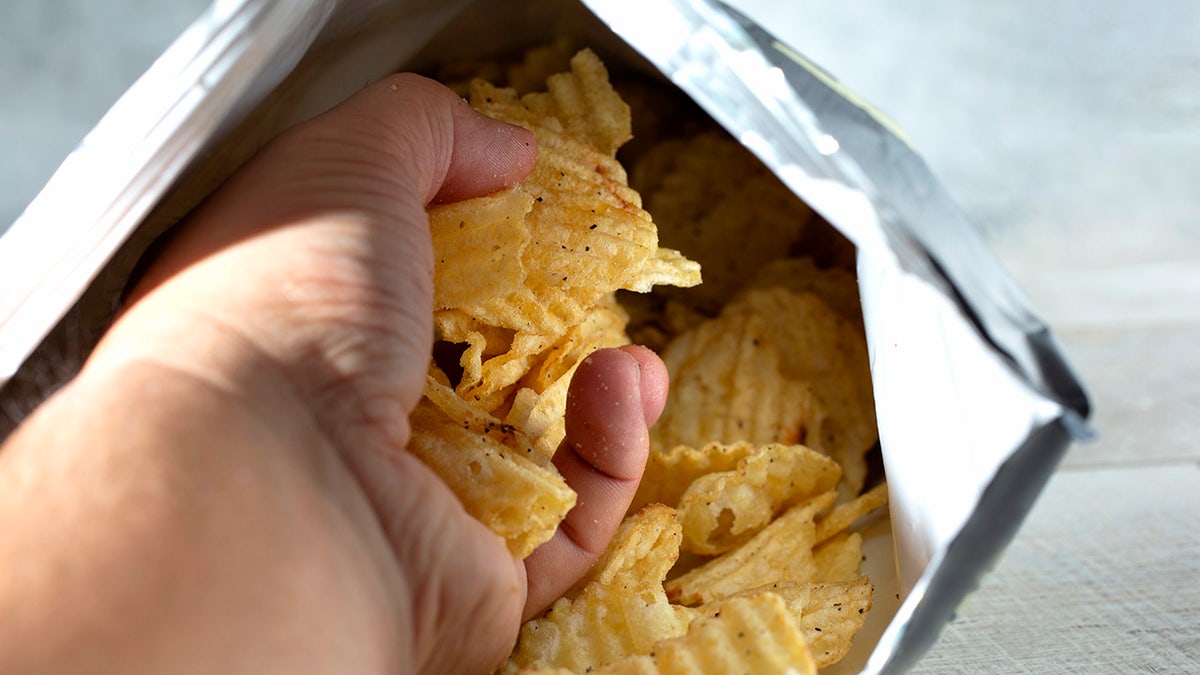
McKechnie, determined to turn things around, made some major changes, such as cutting out nightly chocolate and chips and eating whole, nutritious foods instead. (iStock)
He cut out the nightly chocolate and chips, started eating whole, nutritious foods, and began chewing his food much more slowly.
Now, his lunch — a wholemeal chicken sandwich — takes him 40 minutes to eat.
“I just have a very occasional treat now, and much smaller,” McKechnie told SWNS.
GOLFER PHIL MICKELSON’S STRICT WEIGHT LOSS DIET: DOCTOR SHARES WHAT TO KNOW
His breakfast now consists of fruit, and a typical dinner includes boiled eggs, roasted peanuts, celery, cherry tomatoes, carrots and cucumber.
By focusing on slower eating and more mindful food choices, McKechnie shed nearly 27 pounds, bringing him down to 142 pounds and a size small shirt.
“I honestly thought I was really fit and healthy.”
He also lost two inches off his waist — and, more importantly, his blood sugar dropped to 5.9% within nine months, SWNS reported.
“I’m very determined,” McKechnie said.
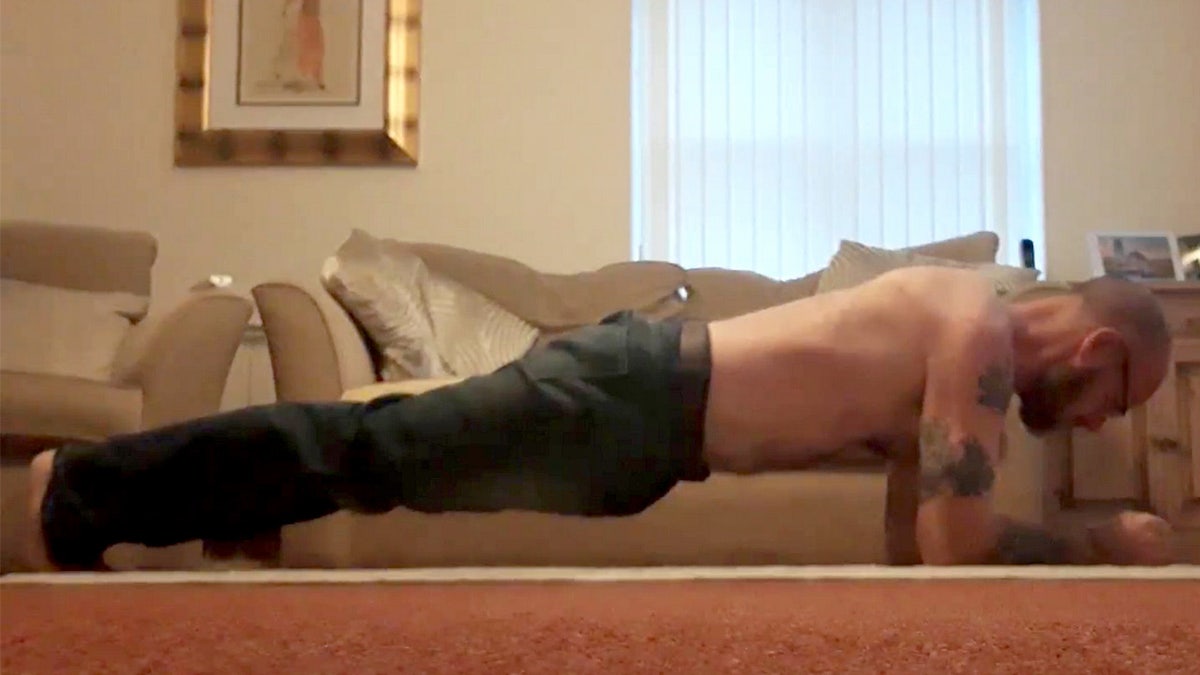
McKechnie (pictured above doing a plank) shed nearly 27 pounds, bringing him down to 142 pounds and a size small shirt. (William Mckechnie / SWNS)
He added, “If I set my mind to doing something, I’ll do it, and I’m going to get my blood sugar even lower.”
The grandfather of four said he no longer battles sugar cravings and doesn’t feel the urge to rush into stores for a chocolate fix.
He also stays busy caring for his 18-month-old grandson and teaching two dance classes a week.
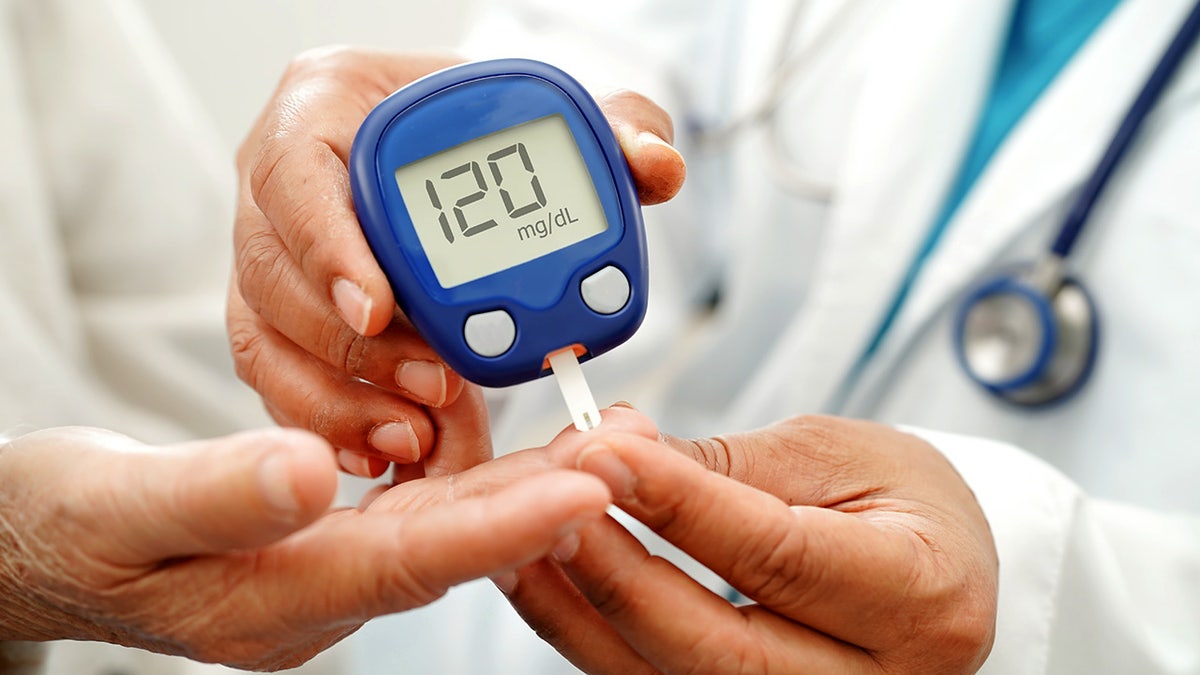
“Even if you have to pay for it, it’s worth getting your blood sugar checked routinely,” said McKechnie. (iStock)
McKechnie, who quit smoking in 1986 and stopped drinking in 2012, believes everyone should be proactive about checking their health — even if they look healthy on the outside.
CLICK HERE TO SIGN UP FOR OUR HEALTH NEWSLETTER
“Even if you have to pay for it, it’s worth getting your blood sugar checked routinely,” he told SWNS, adding, “It’s much, much better to find out.”
For more Health articles, visit www.foxnews.com/health
According to SWNS, McKechnie now says he feels stronger than ever and has “enormous amounts of energy.”
“I’m so relieved I had that test. It has changed my life and made me so much fitter.”
Health
Eating more fruits and vegetables linked to surprising effect on sleep

NEWYou can now listen to Fox News articles!
Your daily meal selections could influence the quality of your sleep, new research says.
A study from the University of Chicago Medicine and Columbia University found that increasing your intake of fruits and vegetables could help promote more restful sleep.
Previous research has shown that people who lack quality sleep may be more likely to indulge in unhealthy foods that are high in fat and sugar — and now this new finding sheds more light on how consumed foods impact sleep.
COUPLES WHO CUDDLE BEFORE SLEEP REAP KEY HEALTH BENEFITS, STUDY REVEALS
In the small study — which was published in “Sleep Health: The Journal of the National Sleep Foundation” — 34 healthy young adults reported their daily food consumption and wore a tracker to measure how often they woke up or changed sleep patterns during the night, according to a press release.
Those who reported eating more fruits and vegetables during the day were found to have “deeper, more uninterrupted sleep.”
A study from the University of Chicago Medicine and Columbia University found that increasing your intake of fruits and vegetables could help promote more restful sleep. (iStock)
Greater amounts of healthy carbohydrates, like whole grains, were found to have that same benefit, the study found.
“Dietary modifications could be a new, natural and cost-effective approach to achieve better sleep,” said co-senior author Esra Tasali, MD, director of the UChicago Sleep Center, in the release.
HOW TO CHOOSE THE BEST SLEEPING POSITION FOR YOU, ACCORDING TO THE EXPERTS
“The temporal associations and objectively-measured outcomes in this study represent crucial steps toward filling a gap in important public health knowledge.”
Based on the study findings, the researchers concluded that people who eat at least five cups of fruits and veggies per day could have a 16% increase in quality of sleep compared to those who eat none of those foods.
“Small changes can impact sleep. That is empowering — better rest is within your control.”
“16 percent is a highly significant difference,” Tasali said in the release. “It’s remarkable that such a meaningful change could be observed within less than 24 hours.”
“Based on current data, the experts confidently advise that regularly eating a diet rich in complex carbohydrates, fruits and vegetables is best for long-term sleep health,” the release stated.
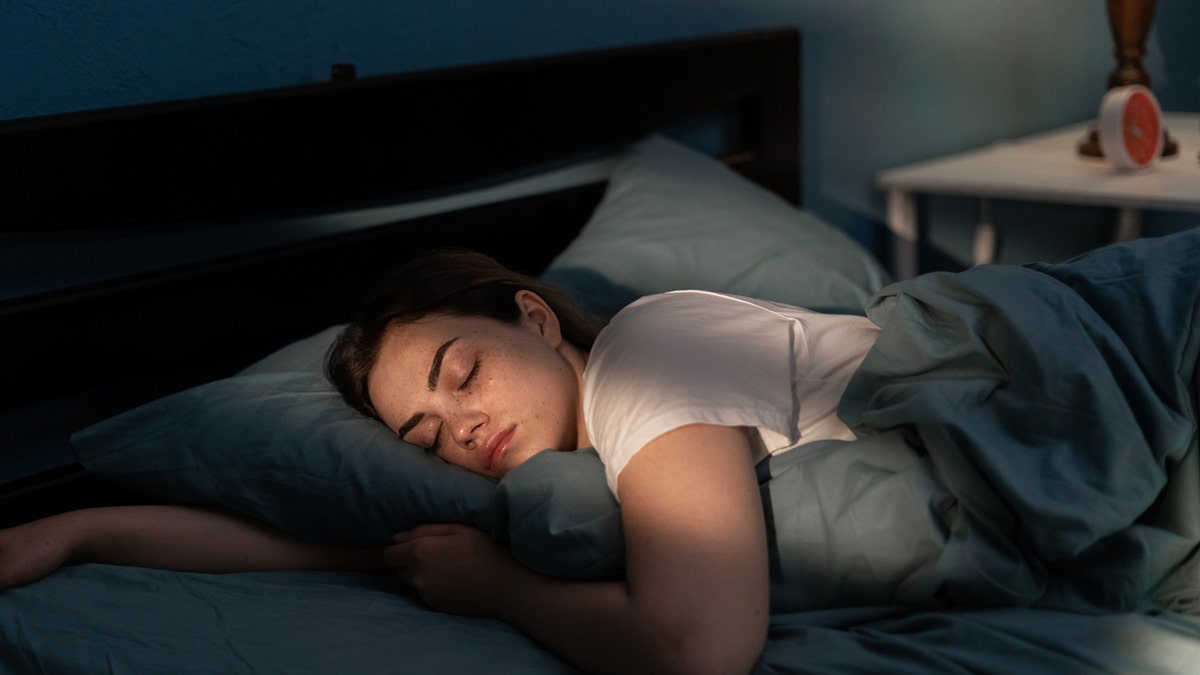
Those who reported eating more fruits and vegetables during the day were found to have “deeper, more uninterrupted sleep.” (iStock)
The American Heart Association provides the following examples of fruit and veggie servings that equate to 1 cup of produce.
- 8 large strawberries
- 1 large bell pepper
- 1 medium potato
- 22 grapes
- 2 medium carrots or 12 baby carrots
- 1 medium apple, orange, pear, peach, grapefruit or nectarine
Dr. Chelsie Rohrscheib, head sleep expert at Wesper in Michigan, said that most sleep professionals recognize that a healthy diet supports overall well-being, including sleep quality — “so the findings of this study are not entirely unexpected.”
“However, it’s important to note that this was a relatively small study composed primarily of young adult male participants, which limits generalizability,” Rohrscheib, who was not involved in the study, told Fox News Digital.
CLICK HERE TO SIGN UP FOR OUR HEALTH NEWSLETTER
“While the results were statistically significant, the overall reduction in sleep fragmentation was modest, about 16%.”
The study was also observational in nature, she noted, which means it lacked the control of a randomized trial.
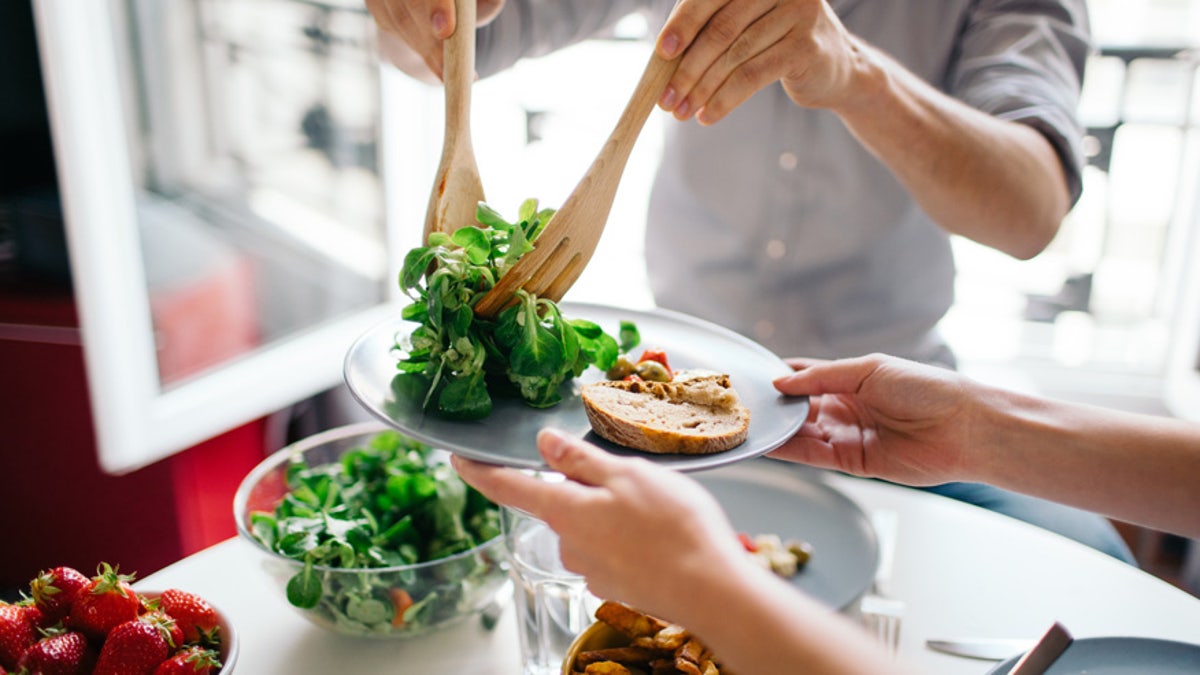
“Based on current data, the experts confidently advise that regularly eating a diet rich in complex carbohydrates, fruits and vegetables is best for long-term sleep health,” the researchers wrote. (iStock)
“Ideally, future research would compare a group consuming a fruit- and vegetable-rich diet to a control group with limited intake to better establish causality,” the doctor added.
The researchers plan to conduct more studies to confirm that eating produce causes better sleep and to determine the “underlying mechanisms of digestion, neurology and metabolism” driving this impact, the release stated.
For more Health articles, visit www.foxnews.com/health
“People are always asking me if there are things they can eat that will help them sleep better,” said co-senior author Marie-Pierre St-Onge, PhD, director of the Center of Excellence for Sleep & Circadian Research at Columbia, in the release.
“Small changes can impact sleep. That is empowering — better rest is within your control.”
-

 Arizona4 days ago
Arizona4 days agoSuspect in Arizona Rangers' death killed by Missouri troopers
-

 Education1 week ago
Education1 week agoOpinion | Artificial intelligence, Trump and the Future: 13 Gen Z-ers Discuss
-

 Technology1 week ago
Technology1 week agoGoogle is shutting down Android Instant Apps over ‘low’ usage
-

 Culture1 week ago
Culture1 week agoSlow and Steady, Kay Ryan’s “Turtle” Poem Will Win Your Heart
-

 News7 days ago
News7 days agoAt Least 4 Dead and 4 Missing in West Virginia Flash Flooding
-

 News1 week ago
News1 week ago‘No Kings’ demonstrators to gather across Greater Cincinnati in opposition to Trump
-

 Movie Reviews1 week ago
Movie Reviews1 week agoTitan: The OceanGate Disaster Movie Review: A sobering deep dive into ambition, negligence, and tragedy
-

 News1 week ago
News1 week agoHow Many Law Enforcement Agencies Are Involved in LA Immigration Protests?














